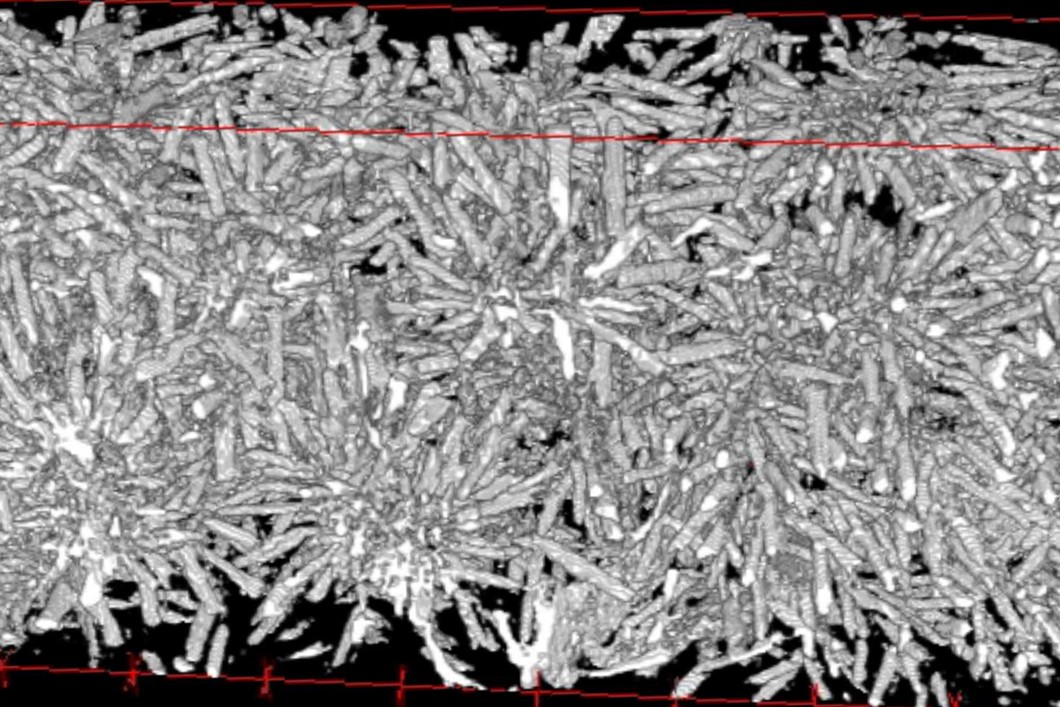
Computed tomography 3D rendering of the crystal growth in glass-ceramic for dental applications AP40.
Source: BAM
Glass-ceramics are used in many applications. Every day we cook on glass-ceramics stovetops, sometimes we even get glass-ceramics dental fillings. Glass-ceramics are amazing materials, as they possess extraordinary mechanical (they are very hard and stiff) or thermal (some can have practically zero expansion if heated) properties. Such materials are created by heat-treating glass, so that it loses its amorphous character and becomes partially crystalline. They are in fact the first nanomaterial used (well before science fashion discovered the word ‘nanomaterials’).
Starting from the 70-ies, a glass-ceramic material called AP40 was developed in the German Democratic Republic (GDR) and later at BAM for bone reconstructions and implants. Such material was widely used in clinical applications and thoroughly studied. Even though it was assumed that formation of the nanomaterial (crystallization of the glass) occurs in the bulk, the mechanisms of such formation and the resulting microstructure were not completely understood.
With our study we shed some more light on the formation of the micro- and nanostructure (in scientific language: crystallization) of the glass-ceramic: the final material forms starting from the bulk (inside), so that crystallization is more evenly spread across the volume. This is important, because a bulk crystallization implies better and more homogenous properties throughout the glass-ceramic batches. To tackle the problem, we had to use many different experimental techniques and competences. Such techniques are basically only available at BAM under one roof, and in fact several BAM divisions were involved. X-ray Computed Tomography, refraction radiography and tomography, scanning electron microscopy, elemental analysis, X-ray diffraction had to be deployed to tackle the problem. The work is a brilliant example of synergy.
Interestingly, we also observed that such crystallization (the growth of the small strong nanocrystals) only occurs in one phase of the glass, which indeed contains two different phases, in spite of the same original chemical composition. Such inhomogeneity at the microscale imparts the material its peculiar properties. While such behavior is common to a few other glass-ceramics, such deep understanding of this ‘old chap’ has never been attained before.
Microstructural characterization of AP40 apatite-wollastonite glass-ceramic
Andrea Zocca, Bernd R. Müller, René Laquai, Andreas Kupsch, Frank Wieder, Sigrid Benemann, Janka Wilbig, Jens Günster, Giovanni Bruno
Published in Ceramics international, 2023, Volume 49, Issue 8, Pages 12672-12679
BAM Materials Engineering
BAM Advanced Multi-materials Processing
BAM Materials Chemistry
BAM Surface Analysis and Interfacial Chemistry
BAM Non-Destructive Testing
BAM Micro Non-Destructive Testing


